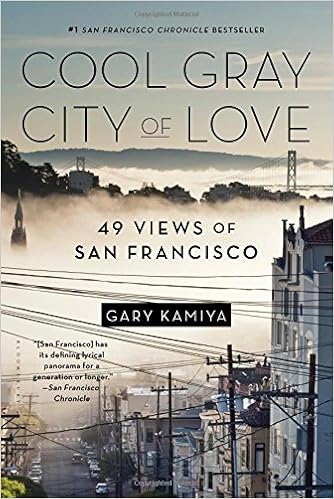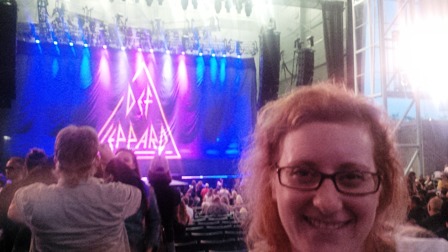
Cool Gray City of Love by Gary Kamiya
Bloomsbury, 2013
I don’t tend to read happy or uplifting books. So it should come as no surprise that the gem of a book I just finished was not self-selected. Val got it as a gift from a friend of his who is currently living in San Jose, California. The book is a collection of 49 ‘sketches’ of San Francisco. I took posession immediately after it arrived in the mail a few days ago.
Before getting into the book, I want to contrast it with my usual types of books. Right now I am also reading (a.k.a. plodding through) Anne Applebaum’s Iron Curtain: The Crushing of Eastern Europe, 1944-1956. I have been reading it on and off for about two or three months – it is that heavy. Though Applebaum is an amazing writer and fills her book with meticulous details about the events that brought Poland, East Germany and Hungary under Soviet control, she also fills her books with horrors. However interesting the stories are, they are sad and they just go on and on. It is for that same reason that I couldn’t finish her earlier book, Gulag: A History.
No wonder I grabbed Cool Gray City of Love and didn’t put it down until I finished it.
I was also deeply attracted because I have a thing for San Francisco. Most people know I’m not much of a traveler, yet I have been to the city by the bay four times (I know this is not much in the annals of travel but it is for me). Each time I’ve stayed somewhere different: touristy Union Square in a posh hotel, shoppy Union Street in a potentially seedy motel, upscale Cow Hollow in a nicer motel a block away from a granola-style restaurant, and Emeryville in a standard Hilton Garden Inn (doesn’t really count – it’s across the bay at the end of the Bay Bridge). Last time Val and I were in San Francisco, only for a day, it was a wonderful day. We picked one thing to do, walk up Telegraph Hill, and it happens that it’s Kamiya’s favourite place in San Francisco. Apparently there’s a lot more to it than the views.
Kamiya is one of those writers who fills his chapters with apropos literary references, few of which I get because I’m not a fiction reader. However, he mostly paints city pictures with his own cheeky little prose style. He meshes his personal experiences, either familiar recollections or new tours with experts both geological and historical, with the rather odd history of the city. Socrates would have loved this guy having been a fanatical city dweller himself. What’s particularly nice and quite informative is that he goes back to the times when the Yelamu Indians lived on the peninsula and is very respectful of these now-disappeared people’s history.
The book’s genesis lies in Kamiya giving himself the task of ‘learning’ his own city, bit by bit, neighbourhood by neighbourhood. It surely didn’t hurt that he was also quite familiar with it through his years as a cab driver. What a way to learn a city, not just its places but its people. His cabbie stories don’t disappoint, especially the one about luring a gay fare away from a fellow driver. This view of the city gives him an ‘if these walls could talk’ advantage.
The other advantage Kamiya has is his sheer love of his city, warts, guts, glories and all. Natural and man-made, touristy and off the beaten path, he loves it all. He loves the mix of inspiring landscapes and spirited people. He loves their struggles to keep San Francisco unique and non-conformist. And he’s honest about the times when battles have been lost such as in the demolition of entire neighbourhoods in favour of highrises. The story of a neighbourhood called the Western Addition, which was home to Japanese families before they were forced to leave the west coast because of World War Two internment, is quite poignant. When the Japanese left, African Americans moved in. While not all the Japanese returned after the end of the war, some did and the question became what to do with them now that they were back and their homes and businesses were occupied. It reminds me of the story my grandmother used to tell of living in wartime Vancouver: all those nice Japanese people just disappeared.
Kamiya is critical of his city and some of its past decisions; he is not a booster in the 100% unquestioning sense. I can relate to this. I consider myself to live in the epicentre of a beautiful and functioning city. But that’s the view from where I am at Broadview and Danforth in my comfortable life. I don’t sit in traffic for two hours a day. I walk two minutes to the subway when I want to get somewhere downtown.
Toronto may not be knowable in the same way – it’s such a huge sprawling city and so much larger in population. Maybe the old City of Toronto (in which I live) could be approached this way.
The reason that Stephen W. of San Jose (formerly of Toronto and Kitchener) sent this book to Val is that he knows Val is a Toronto-lover. He thinks Val could write the Toronto version of Cool Gray City of Love some day. Val used to write a column on Torontoist.com about hidden places in Toronto. I can think of more than a few times when I’ve benefitted from his knowledge. When we first met he took me on a hike on the Don Valley trails – not the well-worn paths but places that were unknown, at least to Risa from North York. A few years ago he lead a bike tour through the laneways of the east side. A little history, a little geography, a big city made little.
A lot of Val’s love of the city has rubbed off on me. I feel like I know Gary Kamiya and I appreciate where he is coming from. I don’t mind that each one of the 49 chapters ends with his unabashed, almost embarrassing love for his city.
